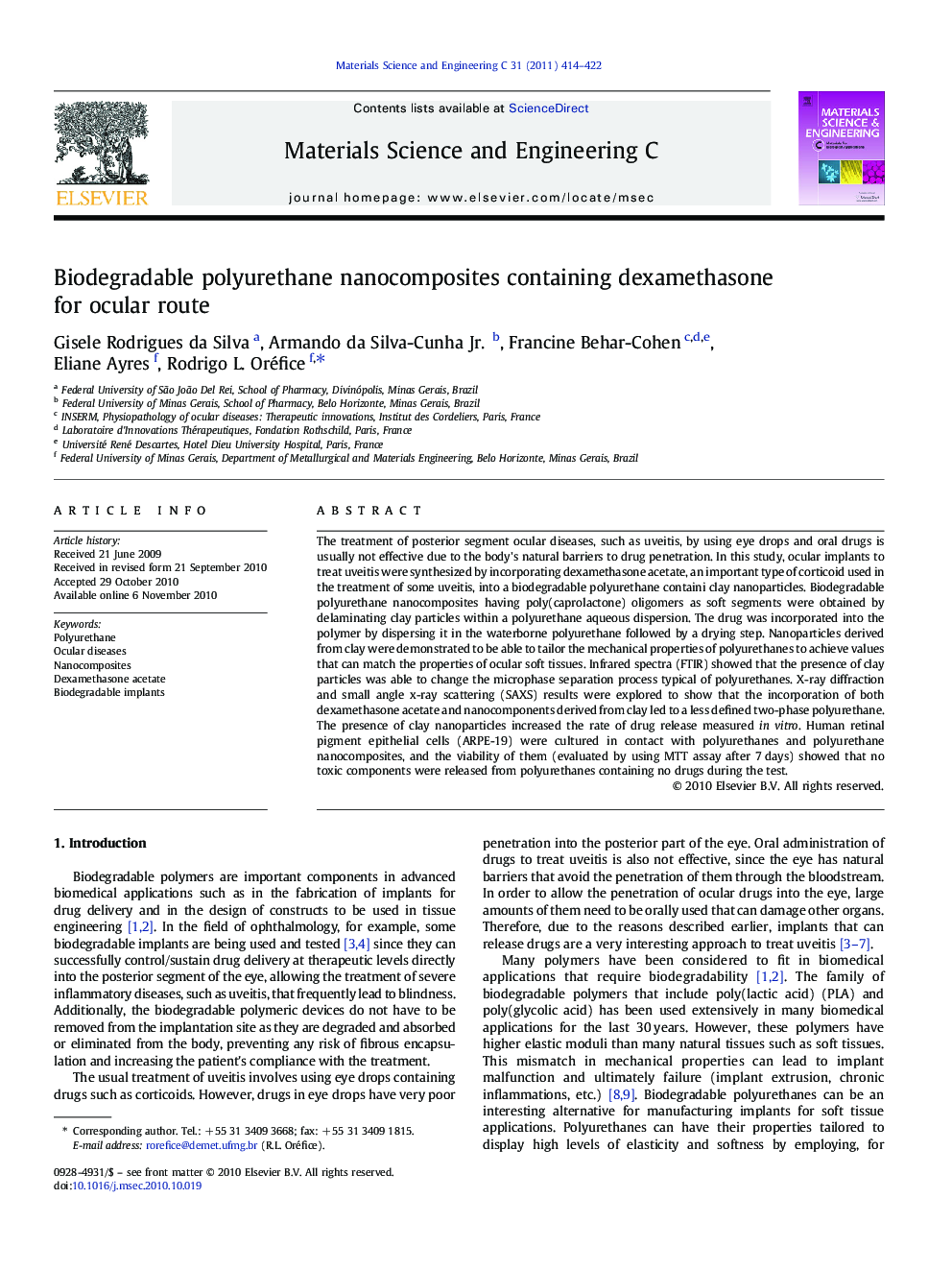| Article ID | Journal | Published Year | Pages | File Type |
|---|---|---|---|---|
| 10614799 | Materials Science and Engineering: C | 2011 | 9 Pages |
Abstract
The treatment of posterior segment ocular diseases, such as uveitis, by using eye drops and oral drugs is usually not effective due to the body's natural barriers to drug penetration. In this study, ocular implants to treat uveitis were synthesized by incorporating dexamethasone acetate, an important type of corticoid used in the treatment of some uveitis, into a biodegradable polyurethane containi clay nanoparticles. Biodegradable polyurethane nanocomposites having poly(caprolactone) oligomers as soft segments were obtained by delaminating clay particles within a polyurethane aqueous dispersion. The drug was incorporated into the polymer by dispersing it in the waterborne polyurethane followed by a drying step. Nanoparticles derived from clay were demonstrated to be able to tailor the mechanical properties of polyurethanes to achieve values that can match the properties of ocular soft tissues. Infrared spectra (FTIR) showed that the presence of clay particles was able to change the microphase separation process typical of polyurethanes. X-ray diffraction and small angle x-ray scattering (SAXS) results were explored to show that the incorporation of both dexamethasone acetate and nanocomponents derived from clay led to a less defined two-phase polyurethane. The presence of clay nanoparticles increased the rate of drug release measured in vitro. Human retinal pigment epithelial cells (ARPE-19) were cultured in contact with polyurethanes and polyurethane nanocomposites, and the viability of them (evaluated by using MTT assay after 7Â days) showed that no toxic components were released from polyurethanes containing no drugs during the test.
Related Topics
Physical Sciences and Engineering
Materials Science
Biomaterials
Authors
Gisele Rodrigues da Silva, Armando Jr., Francine Behar-Cohen, Eliane Ayres, Rodrigo L. Oréfice,
